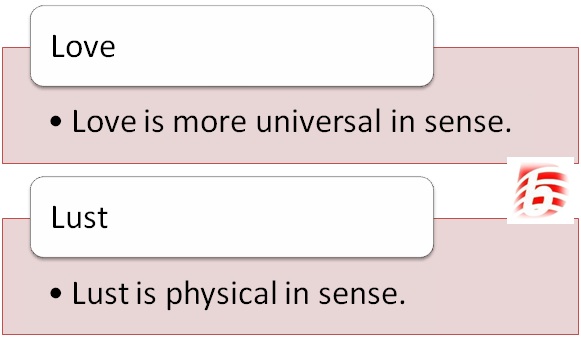Love vs Lust
Love and Lust are two terms often used interchangeably, but in reality, they hold different meanings and connotations. Both words can be used as nouns or verbs and have roots in Old English. Love is associated with spiritual goals, affection, and compassion, while lust is more focused on physical or sexual goals and desires. Let’s delve deeper into the meanings of love and lust.
What does Love mean?
Love is a more universal concept, encompassing affection, compassion, and various other feelings. Phrases such as “God is love,” “Love all,” and “Love of labor” demonstrate the different connotations love can have. In these phrases, love is used to represent the embodiment of love, universality, and attachment, respectively. Love is related to unworldly pleasures and can be considered the supreme bliss.
What does Lust mean?
In contrast to love, lust is more physical and sensual. Lust typically has only one main connotation, which is sensuality. This is evident in expressions like “lust for women” and “lusty looks,” which refer to sex appeal and passion, respectively. Lust can also be used in a secondary sense in relation to money and land, as seen in phrases like “lust for money” and “lust for land.” Lust is associated with material pleasures.
What is the difference between Love and Lust?
- Love is more universal, while lust is more physical.
- Love implies affection and compassion, whereas lust implies sensuality.
- Love can be used in various connotations, while lust has only one main connotation.
- Love is related to unworldly pleasures, while lust is related to material pleasures.
These are the primary differences between love and lust, and it is important to use these words appropriately in writing.
